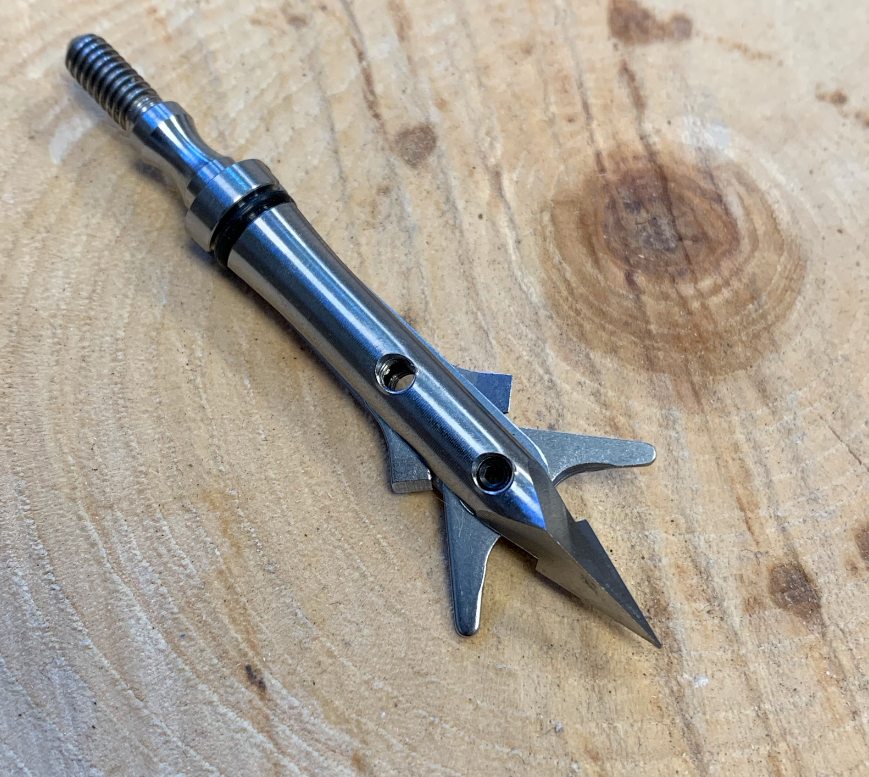This is something you do not see every day: A company actually listening to its customers on improving its already proven product. In this case, it’s a deer hunting product that makes quick work of whitetails.
Well, SEVR Broadheads did just that earlier this year when it launched its new 2.0 head. Most of the reason why that happened is SEVR is a consumer-direct company with a customer-first attitude. That includes reading every comment and listening to every suggestion.
If you have been following along on our D&DH-TV travels, we have been shooting these broadheads since they first came out a few years ago. That first head was the 2.1. I was on one of the first whitetail hunts where these heads were put to the test, and I can tell you that even back then we knew this broadhead was almost overbuilt. It flew straight, penetrated hard and slapped open insane wound channels.
Before I go any further, please know no one is paying me to say anything nice about these broadheads. I won’t endorse, much less speak highly of a product if I don’t truly believe that it works as advertised. The simple truth is that I’ve had so many DDH fans contact me via social media over the past several months that I figured I might as well compile all of my notes and put them in one piece so I can simply email them a web link rather than typing this info out every single time!
OK, about that original 2.1 broadhead … I used one of those on a hefty Nebraska 10-pointer that first year. That buck died within 50 yards of where I shot it after the broadhead sliced 3.75″ holes through both sides of its ribs. It was a grisly scene, but it was also a textbook case of what a broadhead is supposed to do: inflict massive and instantaneous hemorrhaging. Essentially what happens with a SEVR head is that its design catches the hide and stretches it while the blades cut through it. I would have never believed this had I not seen it time and time again on quartering shots especially.

But back to the new redesign. After two-plus years of success stories, why would the company change this head? Simple aesthetics. Most guys, myself included, loved 2.1. And, truth be told, there is nothing wrong with it, performance-wise. However, some skeptics did not like the way the deployment arms stuck out of the ferrule and how the blades weren’t swept back “enough.”
What I find most interesting is that the SEVR engineers didn’t just run out and make changes for the sake of making the product look better. Instead, they went back to the development department and used a “what would happen if we changed this” approach. Interestingly, what they found is that a few tweaks to the deployment arms and a slight change to the blade angle actually improved the broadhead’s performance. The new 2.0 penetrates about 15% better than the original 2.1. That’s significant, if you ask me.
Along these same lines, they made these changes without affecting the current 2.1 fans. My biggest concern was that a new design (the 2.0 will completely replace the 2.1 by next year) will affect those who have already invested in a bunch of 2.1s. The ferrules are the same which means you can buy new blades and still shoot them for however long the broadheads hold up for you.
The SEVR 2.1 and now 2.0 heads are the company’s biggest sellers by far, but don’t discount the 1.5 and 1.7 versions. The 1.5 is the best head for penetration, hands down. If you only care about penetration and want a pass-through every single time, the conversation begins and ends with the SEVR 1.5. That head, like the 2.1 and 2.0, is one piece titanium.
If you want an all-purpose head, then take a hard look at the 1.7. This is an all-around head that is the best value. It costs half of the price of one of those titaniums, and that’s achieved via a very strong aluminum ferrule and a stainless-steel tip (two total pieces).
You can find out more on the SEVR website, but there are three flavors of each broadhead. The 2.0 and 1.5 come in 110- and 125-grain options, and also a Deep Six option. The AP 1.7 is only available in a 100-grain standard option.

For you crossbow hunters, check out the new SEVR Robusto. This includes an all-stainless ferrule that’s actually stronger than the vertical titanium versions. It weighs in at 150 grains. Also remember, however, that any of the SEVR broadheads can be used with crossbows. This one is just specific for crossbow hunters who want a heavier broadhead.
My favorite part of the SEVR story is the price. Not including the AP versions, all of these broadheads are a straight-up $13.99 apiece (the APs are $11.99 each). You can buy one, two, 10 … however many you want. You could also buy one of each and then see which one flies and performs best for you. Each pack also includes a broadhead tool and several extra O-rings. And while I’m on that topic, if you are worried about the O-rings, don’t be. I have yet to encounter a problem with them while in the field. It’s a non-issue.
Editor’s note: For more information, including the direct-order site, check out the SEVR website. Again, these are only sold consumer-direct. You will not find them in the big box stores.
